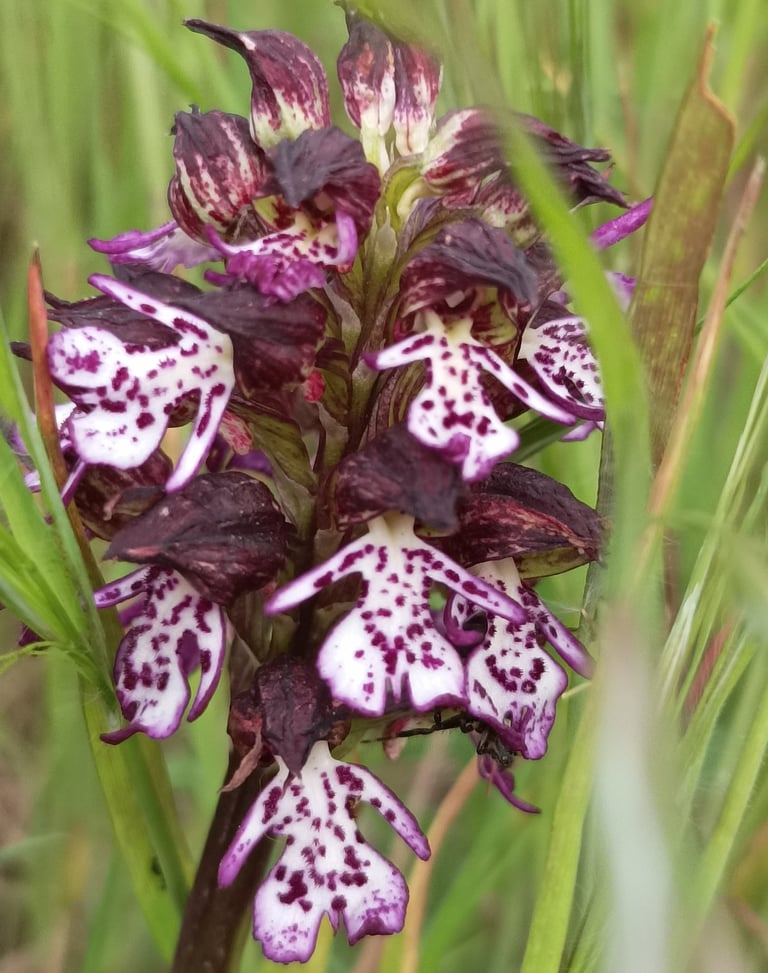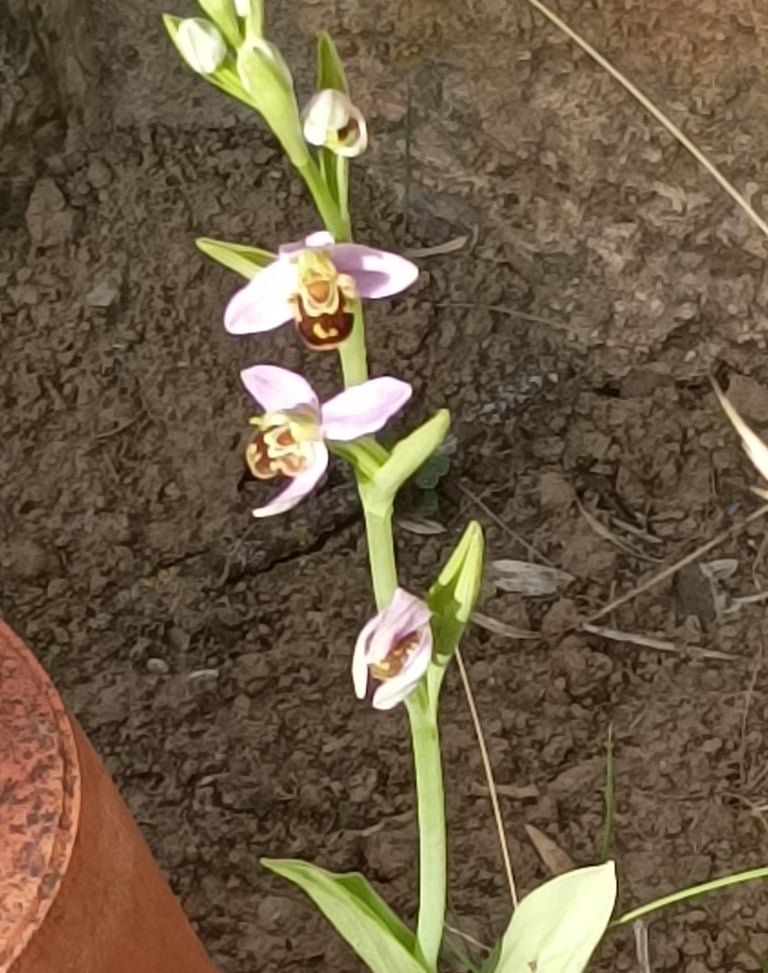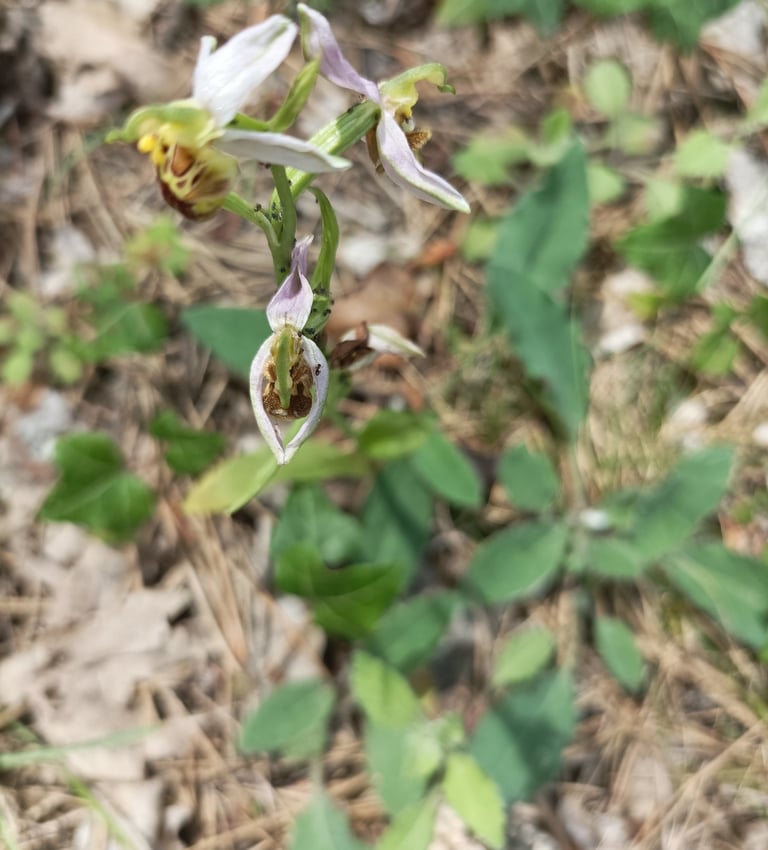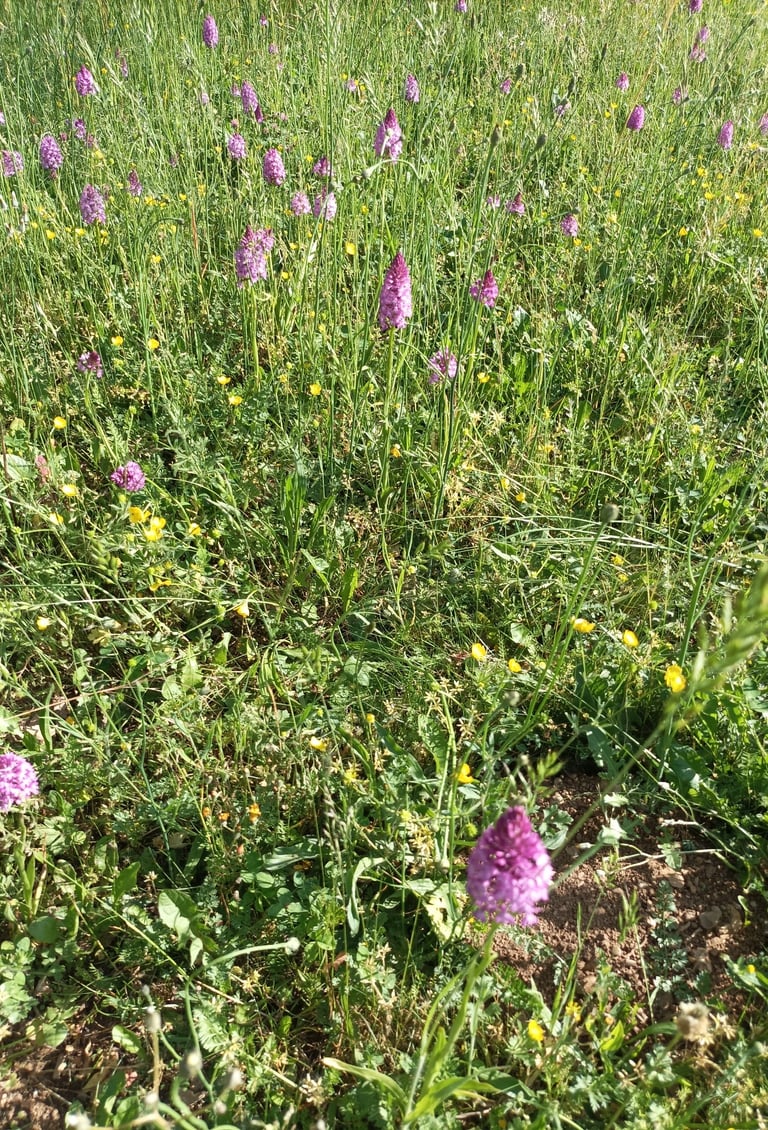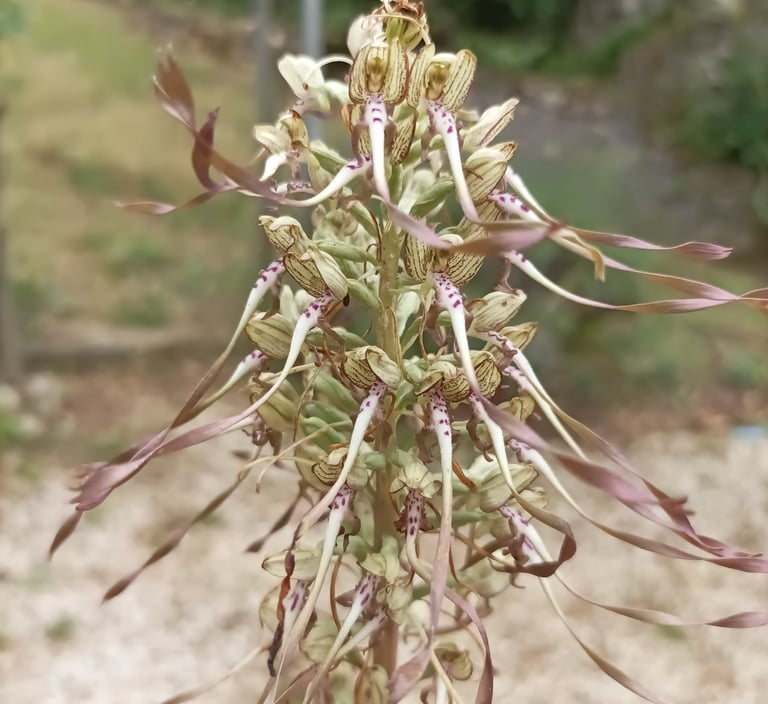
Wild orchids
A short look at this beautiful flower
GARDENINGFLORA AND FAUNA AND THE FOREST WORLD
Joan
6/21/20233 min read
When I was growing up I thought of orchids as something rare, special and highly beautiful. They came singly, mounted in cellophane boxes, and were given to rich people to wear on their lapels.


I grew up on Tyneside , and loved to gather wild flowers from the hedgerows, long before developers came to create new roads and housing. I would place them between sheets of newspaper(The Manchester Guardian of course or perhaps The Newcastle Evening Chronicle) and leave them under the carpet . Once pressed, they were mounted in albums of sugar paper and secured with stamp hinges. Buttercups and daisies, dead nettles, vetch, ragged robins and colt's foot filled my pages, and all were duly labelled. Little did I dream that in other parts of England and even in some parts of Northumberland , one could ever find orchids growing wild.
What is an orchid? Some facts...
The word orchid comes from the Greek for testicle, something that the root resembled. In Middle English some orchids were known as 'bollock worts'. Wort means plant
I confess that , as I am not a botanist, I find the full definition of an orchid to be exceedingly complex . But here are a few layman's facts that may interest you.
The orchid is one of the two largest families of flowering plants . There are about 28,000 species.
Orchids are perennial.
Orchid flowers have three sepals and three petals . One of these petals forms a lip or labellum. This is what attracts the insect , and often acts as a landing stage.
The bee orchid tricks the male insect into thinking it is a bee. Voilà...fertilisation!

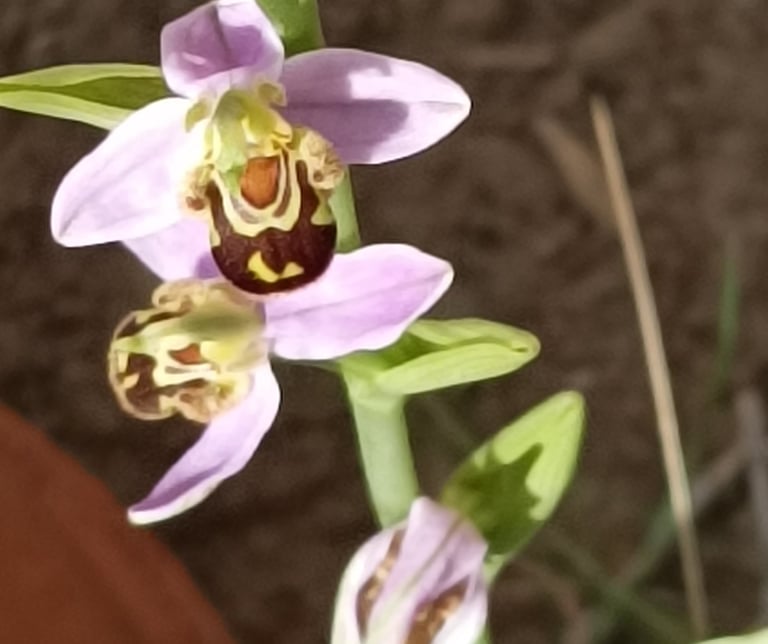
Orchids are beautiful.
The first time I ever saw a wild orchid was when I visited my sister's garden in The Cotswolds , as an adult. Every year my brother in law would proudly point out a single bee orchid that grew in the same spot there every year. But alas, I continued to believe that orchids were both rare and special. Had I investigated further I would have found many more varieties growing on the chalky grassland of that area. But when I came to France, to live in an area predominantly of limestone, Halleluliah! I discovered, much to my delight, that wild orchids grow in abundance here. Every year from Spring to late summer we celebrate their appearance in our garden. From the early spider orchids and weird twisted flowers of the lizard orchids in spring, to the lady orchids , monkey orchids , bee orchids and abundant pyramidal orchids that appear a little later. There is also the saprophytic violet bird's- nest orchid or limadore that feeds on fungi and dead matter rather than manufacture its own chlorophyl. And every single orchid flower, however tiny , has that characteristic shape that marks it out . What's not to enjoy?
